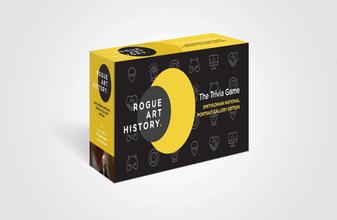More about William McKinley
- All
- Info
- Shop

Contributor
The great task in expounding William McKinley, a masterpiece of Adolfo Müller-Ury, is to prevent a certain unhinged, gun-toting assassin from stealing the show.
U.S. President McKinley's life ended in a tragic incident in a place called the Temple of Music, where McKinley defied the suggestions of his security staff and interfaced directly with the public. He was shot twice in the abdomen by Polish-American anarchist Leon Czolgosz and died 8 days later. After the assassination, McKinley was succeeded by his Vice President, Theodore Roosevelt. This is the last portrait of McKinley from life, and one of Müller-Ury's finest works.
In McKinley's final two years, he sat at least three times for Müller-Ury. He needed the good PR: he inherited an enormously pricey conflict with Spain, which became a war over colonial territories, including Cuba. The flames of nationalist fury were fanned by wild-eyed headlines in newspapers. Instead of a photographer, William Randolph Hearst (the source for the fictional Citizen Kane) sent the artist Frederic Remington to Cuba, in order to avoid Spanish government pressure. Creating the dubious story of the most famous "telegram" in many years of journalism, James Creelman wrote that Hearst replied to Remington's statement that nothing was happening in Cuba with this message: "You furnish the pictures, and I'll furnish the war." The quote is too good to be true, and probably didn't happen. Remington's pictures hung in the same gallery as this Müller-Ury portrait.
Maybe because McKinley wasn't able to advocate for it, this work didn't attain the same degree of success as an earlier Müller-Ury portrait, where McKinley is seated and looking decidedly less grand. Edythe Patten Corbin, the wife of U.S. Army Adjutant-General Henry Clark Corbin, apologized to the artist for her unsuccessful attempt to persuade the federal government to purchase the painting. "It is a splendid likeness and I hope that the Powers will find it so, but one never can tell, there seem to be so many wheels within wheels here," she said. Luckily, the Smithsonian National Portrait Gallery remedied this oversight when they purchased the piece in 1997.
Sources
- Campbell, W. Joseph. "Not likely sent: The Remington-Hearst 'telegrams'." W. Joseph Campbell, http://fs2.american.edu/wjc/www/wjc3/notlikely.htm.
- Cohen, Colin. "Other Portraits by Adolfo Müller-Ury." Missing Portraits, http://www.lankidden.com/missingportraits/Painters/adolfomuller-ury.html.
- Conrad, Stephen. "McKINLEY, President William." Adolfo Muller-Ury, http://muller-ury.com/product/mckinley-president-william-3/.
- Forty, Sandra. Frederic Remington. New York: Chartwell, 2008.
- Stickley, Gustav. The Craftsman, Volume 10. New York: United Crafts, 1906.
- Vogue 21, no. 3. January 15, 1903.
- Vogue 32, no. 13. September 24, 1908.












